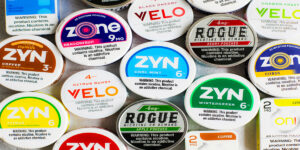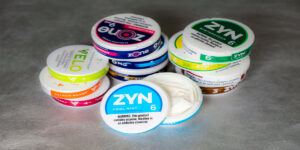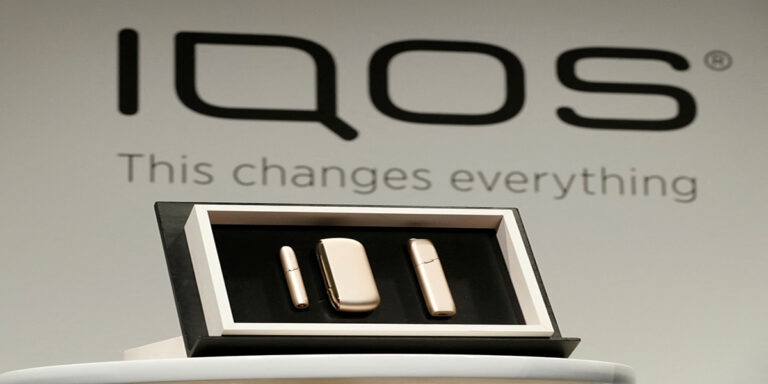Nicotine salts, a game-changing technology in the vaping world, have dramatically shifted the landscape of electronic cigarettes by offering a smoother, more efficient nicotine delivery system. This article delves into the origins, development, and application of both nicotine and nicotine salts, highlighting their transformative impact on the vaping industry.
The Origins of Nicotine and Nicotine Salts
Nicotine
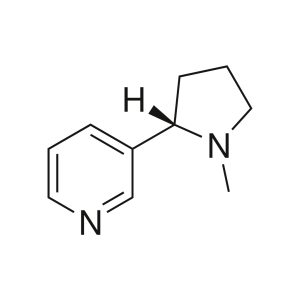
Found predominantly in the nightshade family, including tobacco, nicotine is an organic compound that significantly influences the human body, from sharpening focus to relieving stress. Despite its benefits, its addictive potential cannot be overlooked. Pure nicotine is a colorless, oily liquid at room temperature, with a potent aroma reminiscent of tobacco. Initially, e-cigarettes utilized free-base nicotine, leveraging its volatility for vaporization. However, the strong irritation it caused and its inefficient absorption highlighted the need for innovation in the e-cigarette market.
Nicotine Salts
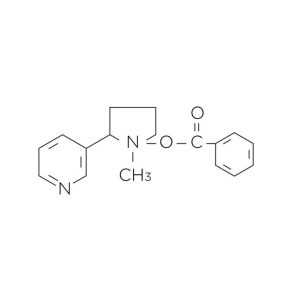
The breakthrough came with the introduction of nicotine salts, a product of nicotine’s reaction with organic acids. This innovation, pioneered by JUUL Labs, marked a significant advancement by enhancing nicotine’s blood absorption efficiency. Nicotine salts have since provided a smoother vaping experience, encouraging a significant number of smokers to switch to e-cigarettes, thus redefining smoking habits across the United States.
Synthesis and Application of Nicotine Salts
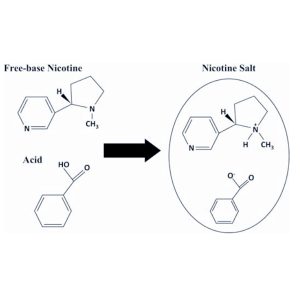
This is an example of benzoic acid (“acid”) molecules in solution forming nicotine benzoate salts. On the left side of the diagram, free-base nicotine is mixed with benzoic acid (“acid”) in solution. Once in the same solution, hydrogen ions (protons) dissociate from the benzoic acid and bond with the nitrogen group on the free-base nicotine molecule, forming a monoprotonated form of nicotine. The mixture of monoprotonated nicotine and deprotonated benzoic acid in the same solution constitutes the “nicotine salt,” which in this case is nicotine benzoate.
Nicotine Salts and Their E-Liquid Production and Application
Detailed Steps for Preparing Nicotine Salts
- Material Preparation: Accurately weigh 473g of nicotine and 527g of strawberry acid.
- Mixing Process: At room temperature, slowly mix the nicotine with the strawberry acid, ensuring it’s fully uniform, to obtain a light red mixture.
- Reaction and Stirring: Place the mixture in a constant temperature environment of 25°C and stir continuously at a speed of 200 rpm for 6.5 hours. Then, let it cool down to room temperature naturally. At this point, the mixture will become clearer, resulting in the desired nicotine salts.
Method and Formula for Producing E-Liquid
- Formula: According to precise mass parts, containing the prepared nicotine salts 2-10 parts, propylene glycol 50-100 parts, glycerol 50-100 parts, and essential oils 1-5 parts.
- Material Weighing: Based on the formula, accurately weigh 5 parts of nicotine salts, 80 parts of propylene glycol, 80 parts of glycerol, and 3 parts of essential oils.
- Special Nicotine Salt Preparation: First, uniformly mix sorbic acid, citric acid, and tartaric acid in a heated stirring tank at 55-85°C, controlling the stirring speed at 60-80rpm. Simultaneously, preheat ascorbic acid, glycyrrhizic acid, tartaric acid, and glycolic acid. Then, add these components and nicotine to the stirring tank in order, ensuring a full reaction. After the reaction is complete, crush the solid to obtain the special nicotine salts.
- Mixing and Dissolving: Place the mixture of propylene glycol and glycerol into a stirring tank, then add the nicotine salts prepared in step 3. Continue stirring at 25-50°C for 1-3 hours to ensure complete dissolution. Then, filter through an 80-120 mesh cloth at room temperature to obtain a pure filtrate.
- Flavoring and Packaging: Add an equal mix of garlic essential oil and wild yam essential oil to the filtrate, stirring for 3-5 minutes to ensure full mixing.
The Differences Between Nicotine and Nicotine Salts
| Nicotine | Nicotine Salts | |
| Properties | Free-base alkaloid, oily liquid | Compound formed in combination with organic acids, solid or crystalline |
| Odor | The distinctive tobacco smell is strong, difficult to mask or change | Milder odor, can be adjusted according to different flavors, offering more choices |
| Taste | Harsher, with a stronger astringent taste, which may affect flavor fidelity | Smoother, with better taste modulation ability, flavoring ingredients can improve taste |
| Throat Hit | Stronger, which may cause throat discomfort or excessive irritation | Smoother, less irritating to the throat, providing a more comfortable experience |
| Lung Absorption Rate | Lower, affected by smoking methods and incomplete combustion of tobacco | Higher, easier to absorb by the lungs after e-cigarette atomization, more efficient |
| Blood Absorption Rate | Lower, some nicotine may not effectively reach the blood, resulting in waste | Higher, nicotine salts can be absorbed more quickly into the blood, meeting needs |
| Blood Transport Efficiency | Lower, affected by various factors such as absorption rate and metabolism | Higher, can quickly satisfy nicotine cravings, improving efficacy |
| Concentration | In traditional methods, concentration is limited, difficult to increase without adding irritation | Can achieve high concentration while maintaining a smooth taste, offering more choices |
| Metabolism Speed | Faster, nicotine metabolizes quickly in the body, requiring frequent replenishment | Slower, nicotine salts metabolize more slowly in the body, providing better persistence |
| Tolerance | Long-term use may lead to increased tolerance, requiring higher doses to achieve the same effect | Relatively stable, but still need to pay attention to dosage and frequency to avoid overdose |
| Shelf Life | Relatively stable, but may degrade due to storage conditions such as light and temperature | Longer shelf life under proper storage conditions, more stable |
Absorption Speed
Nicotine salts are absorbed into the bloodstream extremely quickly, approximately within 6 seconds. This design is intended to mimic the rapid nicotine hit obtained from smoking. The fast absorption and metabolism of nicotine salts allow users to quickly alleviate cravings, reducing the frequency of use. In contrast, the absorption and accumulation process of nicotine is slower, with both its peak appearance and disappearance occurring more gradually.
Taste and Throat Hit
At higher concentrations, nicotine can bring about a peppery, spicy taste, which not only affects the overall flavor of the e-liquid but may also cause discomfort in the throat. In contrast, due to their closer-to-neutral pH value, nicotine salts are milder on the throat even at high concentrations and do not negatively affect the taste of the e-liquid.
Development Directions and Trends of Nicotine Salts
Choice and Optimization of Acids:
The three most common acids used in the synthesis of nicotine salts are lactic acid, benzoic acid, and levulinic acid, with benzoic acid being the most commonly used. Future technological innovations may focus on finding more suitable acids or optimizing the performance of existing ones. This includes improving the selectivity of acids for nicotine, increasing reaction efficiency, and reducing by-products. Moreover, the exploration of new types of acids or catalysts for a more efficient nicotine salt synthesis process is also a possibility.
Increasing the Purity of Nicotine Salts
Enhancing purity is one of the important goals in the research and development of nicotine salts. Developing more efficient and precise separation and purification techniques to remove potential impurities and increase the purity of nicotine salts will achieve a better throat hit and satisfaction under legal nicotine concentration conditions. This will help smokers better adapt to e-cigarette products with lower nicotine concentrations.
Composite Nicotine Salt Technology
This is an emerging direction in research and development, aimed at precisely calculating and optimizing the ratio of acid to nicotine by studying the properties of nicotine salts formed by the combination of organic acids and nicotine, thus achieving better taste and transmission efficiency. The core of this technology lies in understanding the interactions between different organic acids and nicotine and how these interactions affect the chemical properties, physical form, and sensory experience of nicotine salts.
In summary, the direction of technological innovation for nicotine salts is diversified, aimed at enhancing purity, optimizing taste, increasing stability, and meeting the diverse needs of consumers. These innovative measures will help promote the wider application and development of nicotine salts in the e-cigarette industry.

